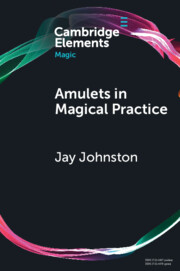Element contents
Amulets in Magical Practice
Published online by Cambridge University Press: 28 March 2024
Summary
- Type
- Element
- Information
- Series: Elements in MagicOnline ISBN: 9781108953412Publisher: Cambridge University PressPrint publication: 25 April 2024



